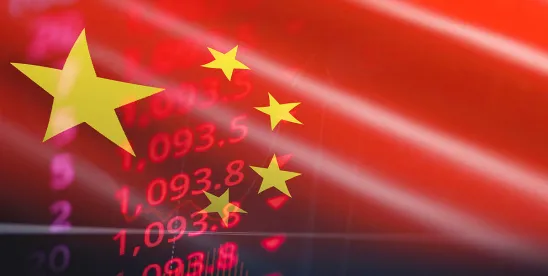A long-awaited statutory review of tariffs imposed on imports of Chinese goods under Section 301 of the Trade Act of 1974 resulted in the Biden Administration increasing tariffs on EVs, semiconductors, solar products, steel and aluminum, batteries and medical products as well as adding certain PPE medical products and ship-to-shore cranes to the tariff list and leaving tariffs in place on other goods at the same rates. The vast majority of tariff increases will go into effect on August 1, 2024. Additional details about the timing of the tariff increases and the outlines of a limited exclusion process directed at machines used in domestic manufacturing, with specific exclusions for certain solar manufacturing equipment, were provided in a Federal Register notice today and include:
- Tariff rate increases for the following categories of goods:
- Electric Vehicles increase from 25% to 100% on August 1, 2024
- Solar Cells (whether or not assembled into modules) will increase from 25% to 50% on August 1, 2024
- Semiconductors increase from 25% to 50% on January 1, 2025
- Certain steel and aluminum products increase from 7.5% to 25% on August 1, 2024
- Certain PPE equipment (including respirators, face masks and gloves) will increase to 25% on August 1, 2024
- Lithium-ion EV batteries will increase from 7.5% to 25% on August 1, 2024
- Lithium-ion non-EV batteries will increase from 7.5% to 25% on January 1, 2026
- Battery parts will increase from 7.5% to 25% on August 1, 2024
- Imposing tariffs on two categories of previously exempt products:
- ship-to-shore cranes at 25% on August 1, 2024
- syringes and needles at 50% on August 1, 2024
- Continued tariffs at same level for vast majority of covered imports;
- Establish an exclusion process that targets products covered by chapters 84 and 85 of the HTS, which includes machinery, mechanical appliances, and electrical machinery, among other items. In addition, USTR provided 19 temporary exclusions for specific solar equipment which go into effect immediately and expire on May 31, 2025.
- Comments are due on June 28.
- Currently in force exclusions are not addressed in this notice, which suggests that those exclusions will sunset on May 31, 2024, as scheduled.
- USTR is requesting comments on the following:
- USTR’s proposed modification for adding or increasing Section 301 tariff rates on certain products from China listed in Annex A, including the effectiveness of the proposed modification in obtaining the elimination of or in counteracting China’s acts, policies, and practices related to technology transfer, intellectual property, and innovation and the effects of the proposed modification on the U.S. economy, including consumers
- Whether the Harmonized Tariff Schedule (HTS) subheadings listed in Annex B should or should not be eligible for consideration in the machinery exclusion process
- Whether Annex B omits certain HTS subheadings under Chapters 84 and 85 that cover machinery used in domestic manufacturing and should be included
- The scope of the proposed solar manufacturing exclusions in Annex C, including any suggested amendments to the product descriptions.
While industries had mixed reactions to the Administration’s announcement, congressional attempts to stop the new tariffs from going into effect are unlikely to succeed. Also, while importers have challenged the President’s authority to modify the Section 301 tariffs after their initial implementation, a decision from the Court of Appeals for the Federal Circuit is not likely until mid-2025.
Because the report found that China continues to steal U.S. intellectual property through cyber theft and related activities, the report concluded that “To reduce the exposure of U.S. persons, companies, and technologies to China’s technology transfer-related acts, policies and practices and to strengthen the resilience of America’s supply chains, USTR, other U.S. government agencies, and the U.S. Congress should continue to assess approaches to shifting supply chains away from China and enhancing the supply chain impacts of the tariffs.”
Therefore, affected industries should make supply chain decisions with the expectation that tariffs, at least on imports from China, are unlikely to go away. Additionally, the Government of the People’s Republic of China has pledged to take “resolute measures” to defend itself. Such measures are likely to include retaliatory tariffs on U.S. exports to China.






 />i
/>i
